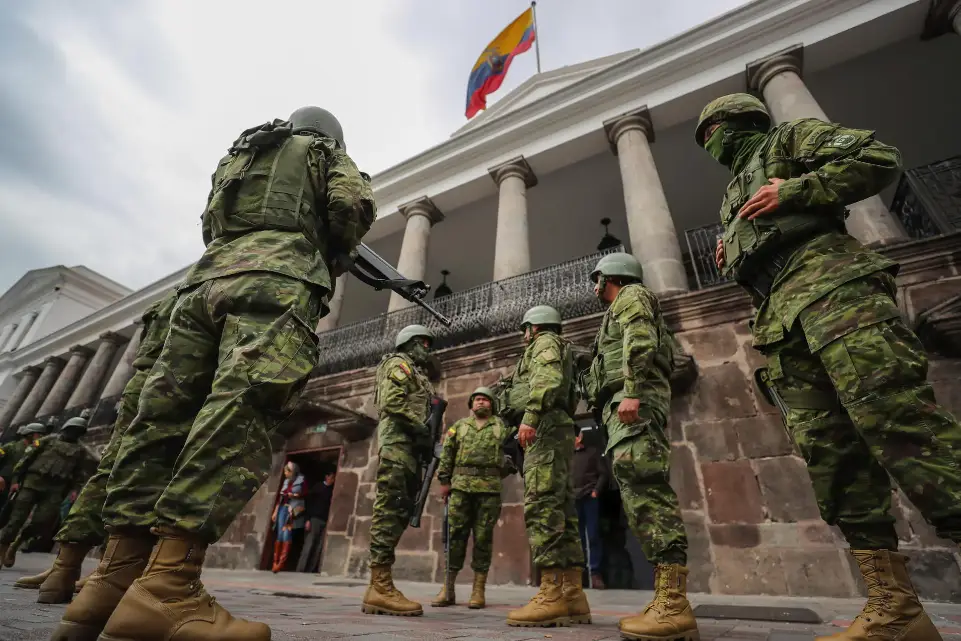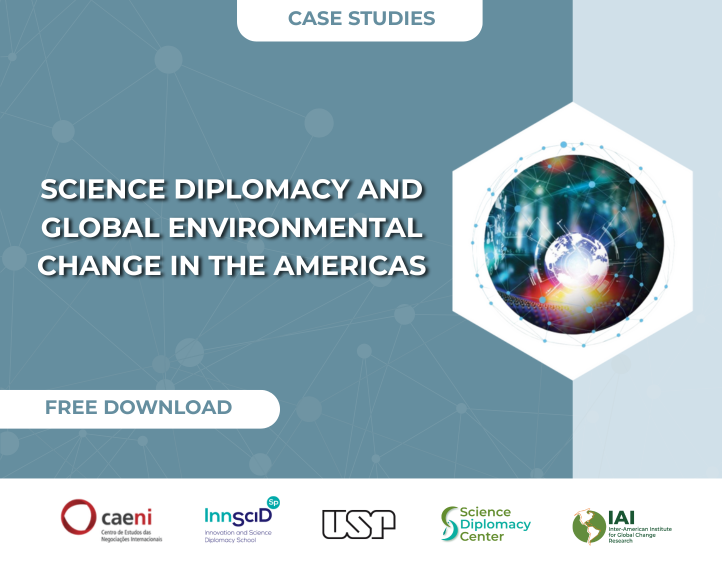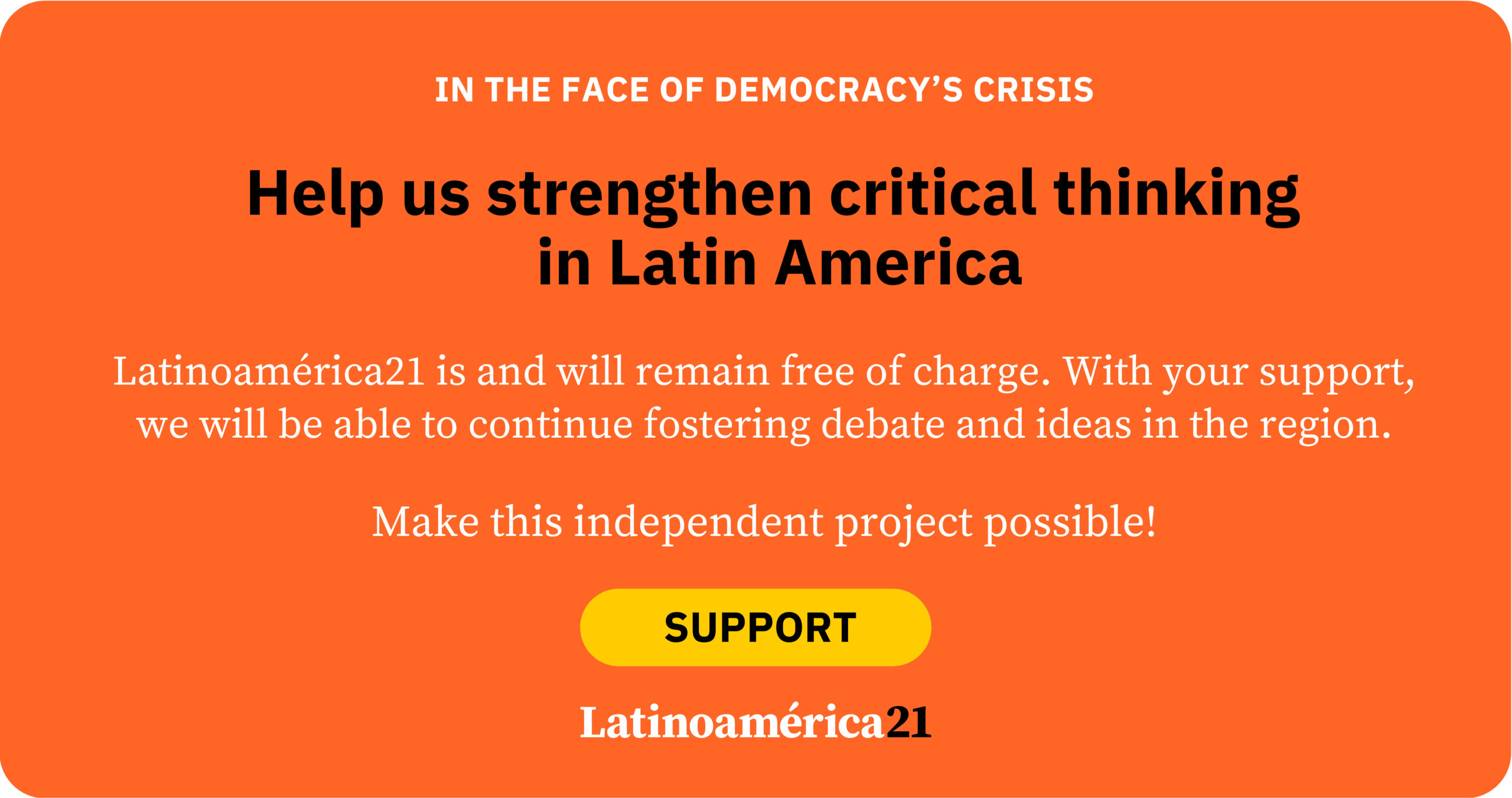Ecuador is officially at war. That’s the decision made by President Daniel Noboa’s government on January 9, 2024. On that day, after a wave of violent criminal acts in several provinces, the President issued Executive Decree 111, acknowledged the existence of an internal armed conflict, and identified 22 criminal groups as terrorist organizations.
The militarization of internal security was justified as a response to the severe wave of violence that made 2023 the most violent year in the country’s history, with 8,008 homicides and a rate of 47 per 100,000 inhabitants. However, more than a year later, the situation continues to deteriorate: in just the first quarter of 2025, there were 2,361 violent deaths—setting a record. If the trend continues, this year may surpass even 2023’s levels of violence. Rather than containing it, the militarization policy has intensified the violence.
Ecuador’s reality has been over-diagnosed in security studies, often repeating three central ideas: the State’s loss of territorial control, its inability to halt illicit economies, and the need to reinforce its operational capacity. Yet, these explanations offer a limited view of the country’s complex situation.
Following the theories of British academic Bob Jessop, instead of focusing on the State’s formal dimensions (representation, institutional articulation, and intervention capacity), I will briefly analyze its substantive dimensions: the State’s social base, its project, and its hegemonic vision.
The first multiplying factor of violence and crime is the breakdown of the institutionalized social commitments of the State. A revealing statistic is school dropout rates. In Ecuador, more than 450,000 children and adolescents, aged three to 17, are not attending any of the country’s 16,000 schools. How many of these children and teens have been recruited by street gangs and are now fueling violence and crime? The age of criminal recruitment hovers around 13, and just in 2024, the number of missing minors rose by 88%.
While the government and its military advisers look to buy more bullets for their war, in the Costa and Galápagos regions alone—where a new school year is about to begin—80% of public educational institutions need urgent repairs (7,520 schools). Add to this the resurgence of epidemics due to the lack of vaccination campaigns recently, rising unemployment, increasing poverty, and the economic contraction caused by mismanagement of the energy crisis.
The social reproduction of criminal violence is not a spontaneous phenomenon. On the contrary, it is the result of the State’s systematic loss of its social base.
And it’s not merely a material issue; the symbolic dimension also carries significant weight. Without mechanisms for social mobility or policies of inclusion and recognition, individual future expectations stall, and the younger population either migrates abroad or seeks alternative paths outside the law.
From this perspective, it becomes clear that the State hasn’t lost territorial control. What it has lost is its social base—particularly in the poorest regions. That’s why militarizing them has limited effect and becomes counterproductive in the medium term.
Without a government seriously committed to the State’s institutionalized social responsibilities, criminal organizations will continue to gain support and reshape the State into a “crimilegal order” that serves their interests.
The second multiplying factor of violence and crime is the State’s legitimacy crisis, due to the absence of a political project that ensures its operational unity and capacity to act—what Jessop calls a “State project.”
Since the outbreak of criminal violence in January 2018, the governments of Lenín Moreno, Guillermo Lasso, and Daniel Noboa have all opted for a “minimal State” model. Draconian agreements with the IMF and the carrot-and-stick policies imposed by the U.S. to align Ecuador with its hemispheric agenda have accelerated this reconfiguration.
In this minimal State model, the military and police forces become the primary bureaucratic arms of the State. The continuous declaration of States of Emergency—more than 40 since 2018—to restrict civil rights and militarize public order, confirms this.
Instead of promoting dignified employment policies, the governments of Lasso and Noboa have chosen to recruit thousands of young people into the police and military forces. Lasso promised a significant increase in police numbers but only managed to add 12,000 before leaving office. Under Noboa, with the declaration of internal armed conflict, the military has assumed a predominant role, and in 2024 it was announced that military service would quadruple by 2025.
Militarization is intrinsic to the minimal State project promoted by the national government. A failed military strategy has replaced the design of a sound criminal policy. That’s why when the government detects persistent criminal problems in the public sector, its only response is military.
The clearest example is the recent militarization of Teodoro Maldonado Carbo Hospital in Guayaquil and Carlos Andrade Marín Hospital in Quito. Faced with constant threats, murders, and kidnappings targeting officials who obstruct shady dealings in public procurement at both hospitals, the government’s response was military intervention.
In this context, Daniel Noboa wields only hammers, even in a glass shop.
Finally, the third aggravating factor of violence in Ecuador is the hegemonic vision of the ruling power bloc, based on blind faith in market deregulation. This minimal-State logic has turned the country into a paradise for illicit economies, facilitating the expansion of drug trafficking, illegal mining, smuggling, and arms and human trafficking.
An oligarchic regime has consolidated in Ecuador. As political scientist Jeffrey A. Winters explains, oligarchy refers to the politics of wealth defense by actors who possess the material means to do so. Typically, oligarchs fund armies of lawyers and politicians to do the dirty work and protect their interests. But when the State’s legitimacy crisis erodes even the margins of legality, they intervene directly in politics to defend and multiply their wealth.
The political rise of Guillermo Lasso and Daniel Noboa is no coincidence. The former owns the country’s third-largest bank and heads one of its five wealthiest economic groups. The latter is heir to Ecuador’s most important agro-export conglomerate. For both, deregulation is the cornerstone of their governance. That same worldview is shared by oligarchs directing drug trafficking operations from Europe, Asia, and North America.
One example says it all: through their policy decisions, Lasso and Noboa have enabled the expansion of arms trafficking in Ecuador. One relaxed firearm ownership and carry regulations; the other eliminated import tariffs. Today, 8 out of 10 homicides are committed with firearms. And smugglers’ preferred route is shipping them via courier from Miami.
Now you, dear reader, may better understand why Ecuador is a country drenched in blood.
*Machine translation proofread by Janaína da Silva.













